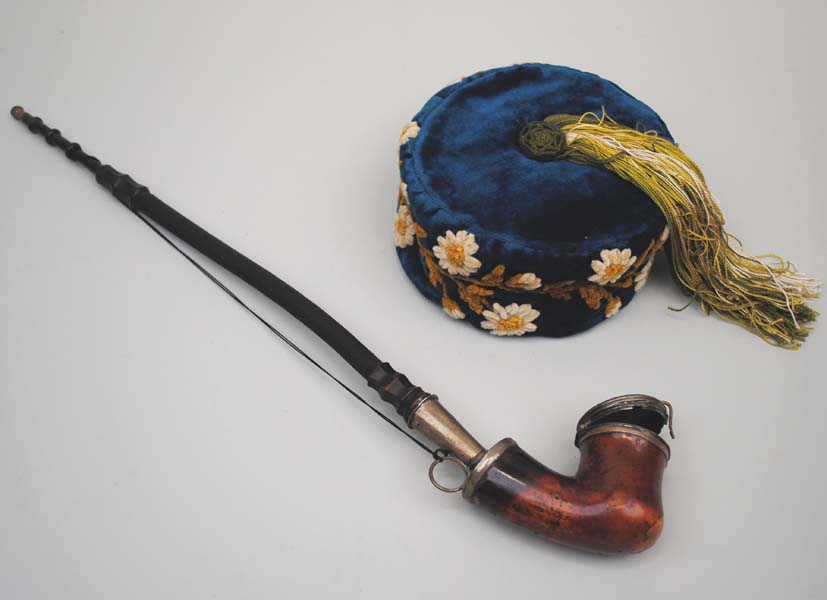
The Horse & Buggy Era (1880-1900)Reuben Shipman's Pipe and Smoking Cap |
|||
|
|||
Reuben Shipman's Edwardian smoking cap and Victorian era pipe |
Reuben Spencer Shipman and Jane Adeline Brewster migrated from the United States to Canada just shortly after the new Dominion was formed. Their son Reuben Brewster Shipman was born shortly after. DISCOVER MORE![]()
Until 1913, Rebuen Shipman owned and sailed the Winnie Wing, a schooner which carried cargoes of timber and potash to local ports and Oswego New York, returning with loads of coal. On a return voyage in 1913, the Winnie Wing, carrying three hundred ton of coal, collided with a scow and sank in the Napanee River.
When Reuben was sixteen, a young girlfriend gave him a pipe. His pipe has a meerschaum lidded bowl with a long, flexible stem for a cool smoke. Mr. Shipman only smoked this pipe when he was on the water. Traditionally, when smoking was permitted on board vessels, pipes had to be covered by a lid to keep sparks from flying.
Reuben Shipman's royal blue velvet smoking cap is later than the pipe, dating from the Edwardian period. Reuben's tasselled smoking cap is embroidered with chenille flowers and lined with red silk. In Victorian and Edwardian etiquette, a velvet smoking cap was the perfect present for a young lady to embroider for her fiancÚ.
Victorian smoking attire traces its origins to the beginning of the sixteenth century when trade with the East began to bring luxuries, including tobacco, to northern Europe. Smoking became popular during the period of the Crimean War (1853-1856), when Turkish tobacco became readily available in Europe. In Victorian homes, smoking rooms became fashionable, furnished with padded leather and oak chairs fitted with hidden compartments for storing pipes and tobacco. Along with the smoking room, came fancy attire including jackets and caps, designed after the Turkish fez. Before lighting a cigar or pipe, usually after dinner, smoking jackets and caps were donned to protect clothing and hair from tobacco fumes.
© Lennox & Addington County Museum & Archives
97 Thomas Street East, Napanee, Ontario, Canada K7R 4B9
Funding provided by the Government of Ontario and the County of Lennox & Addington




